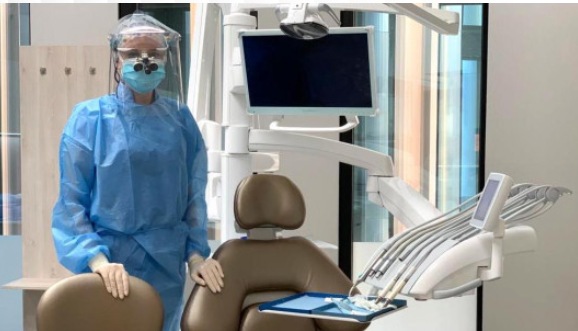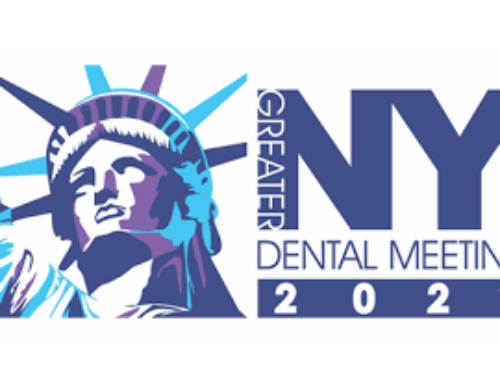Information Dental offices need when they decide to re-open
During this critical time of staged re-opening of dental practices across the nation, Sodium Dental is gathering data and consulting with community experts on critical information dental offices need when they decide to re-open their dental practices. Recently, the American Dental Association’s (ADA’s) Advisory Task Force on Dental Practice Recovery released interim guidelines on short-term management of dental practices while the COVID-19 pandemic is still active. The full document can be found here.
The number of considerations and precautions during this re-opening period can be overwhelming, so Sodium Dental has compiled a shortlist of recommendations to provide an overview of technology and practice-related changes to consider to promote a safe operating environment for employees and patients.
As offices come back online after the COVID-19 closure, some important changes will need to be made to ensure maximum safety for patients and employees. Ensuring your office is properly equipped with safety equipment and environmental control supplies are critical. The following is a non-exhaustive list of supplies your office should purchase before reopening to the public:
Recommended Equipment
1.Hand sanitizer
2.Hand soap
3.Aerosol control barrier (contact Sodium Dental for more information)
4.Handwashing/hygiene reminders and instructions
5.Adequate PPE – See PPE comparison table on the following page for guidance. N-95, KN-95, FFP2, or equivalent should be used for anyone with direct patient contact.
6.Handheld thermometer for patient temperature screening
7.Disinfectant wipes for cleaning high-traffic areas
8.Disposable paper hand towels for drying hands after washing
9.Clear barriers for front desk and reception area, when applicable
10.Gloves, gowns, barrier shields, and other standard anti-infection protective equipment, to maintain stock
Visit our PPE Catalog We Will Try To Source As Many Options As Possible Including Masks
Getting Your Technology Back Online
As dental offices begin seeing regular patients again, an overlooked preparatory step that can prevent significant setbacks is ensuring your technology is fully functional and operating before you open your doors again. Many of these steps should be checked periodically, even if your office is closed, but it is critical to ensure your office technology is working smoothly before you come back. With the extra responsibilities and effort imposed by new safety protocols, any unforeseen technology hiccups could significantly hinder the ability of the office to focus on patient safety.
1. Hardware check
• Did your office experience power disruptions while unsupervised?
• Do all hardware units (server, workstations, UPS units, x-ray tube heads, Panos, etc.) boot up and work properly?
2. Network check
• Ensure all computers are properly connected to the network.
• Check that all imaging and practice management software is taking images and saving information properly.
• Do you have any internet connectivity issues? If you have cloud practice management or imaging software, ensure there are no issues connecting to and using your service.
3. Backup check
• Has your backup system been running while your office was closed?
• Were there any disruptions while your office was closed that could compromise or corrupt the backup system?
• In the days before you open back up to the public, try restoring from a recent backup to ensure the system is still working properly.
4. Operating system and software check
• When systems are shut down for an extended period, they will likely be missing several critical operating systems and software updates. These updates are essential to maintaining the security of your network.
• Security updates can inadvertently affect the functionality of softwares, so a few days before you plan to re-open, perform all suggested Windows and software updates on your server and all workstations.
• If you run into compatibility issues or other errors, please reach out to your IT manager right away.
Sodium Dental is also available at 800-821-8962 or support@sodiumdental.com to get any of these
issues resolved immediately.
PPE Comparison of common PPE. Face masks approved under the current FDA, EUAs, including KN-95 masks, provided functionally equal protection to NIOSH-approved and N-95 masks. The following courtesy 3M.
Return-to-office roadmap: Reception Area Considerations
Returning to regular operation may be a long way away, so there are several changes to your reception area that Sodium Dental recommends while the COVID-19 threat is still active. Implementation of these strategies
will require some staff training and purchasing of supplies.
Sodium Dental recommends the following for your reception area as you return to operation:
1. Place hand sanitizer stations at every entrance/exit.
2. Offer boxed tissues (as many separate boxes as makes sense for the size of your reception area).
3. Remove chairs to provide enough space between chairs to maintain proper social distancing.
4. Offer hand soap and disposable paper towels for drying (if applicable).
5. Remove children’s toys, reading materials, and other patient-shared items from the reception area.
6. Assign a staff member to wipe down all door handles regularly, chairs, light switches, handrails, etc. in the reception area to disinfect high-traffic areas.
7. Supply appropriate PPE to front desk staff. If N-95 or equivalent is unavailable, offer ASTM Level 3 surgical masks or equivalent to provide sufficient protection to your team.
8. Post instructions in the reception area and all entrance doors to patients for proper social distancing and safety procedures while in the office.
9. Allow only patients (and parents/guardians of minors) to be present in the reception area. Friends, family
members, and other non-patients must wait outside.
10. Have a thermometer available for screening patients with possible fever (>100.4 °F). Follow all proper infection protocols when using the thermometer on different patients. Direct patients with a high temperature
to their health care provider for further evaluation and reschedule the appointment.
11. Have patients call when they arrive and offer the option for them to sit in their car while waiting for their appointment.
12. (Optional) Have a set of masks or similar PPE available to offer patients with a high concern or other risk factors (elderly, immunocompromised, etc.) for patient reassurance and risk minimization.
Providing a safe and clean office environment is a significant priority for all dental offices wanting to re-open their doors.
Patient and Operatory Considerations: Re-opening
Patient contact in the operatory presents a difficult set of challenges for dentists to provide necessary health care to patients while ensuring maximum safety to patients and staff during the COVID-19 crisis. Given the ease of transmission of the virus and length of time, before many patients or employees may be symptomatic, proper infection and safety protocol is critical to maintaining a safe environment for everyone.
Watch Sodium Dental’s informational article and video on proper infection control for keyboards, sensors, etc. here:
https://www.sodiumdental.com/proper-infection-control-especially-with-what-is-happening-with-covid-19/
Sodium Dental recommends the following equipment and procedures:
1. Provide N-95, KN-95, or equivalent masks (see chart above) for the dentist and any staff member in very close contact (e.g., hygienist, etc.) with patients.
2. When possible, use keyboard covers or equivalent for computers in the operatory, disinfecting them properly between patients.
3.Similar to the reception area, when possible, limit access to the operatory to only the patient (exceptions for very young minors or people with otherwise unique needs).
4. Minimize non-essential staff access to the operatories.
5. Wash hands frequently and apply gloves while in room to improve patient reassurance and limit infection protocol mistakes
6. If possible, use a clear physical barrier in front of the patient’s mouth when performing invasive procedures. Contact Sodium Dental at 800-821-8962 or support@sodiumdental.com for recommendations.
7. Avoid unnecessary paperwork in the operatory.
8. Perform extra-careful examination of any potential avenues of patient-to-patient contamination on equipment — particularly non-autoclavable equipment. For example, conduct a thorough examination of barrier shields after properly removing them from a patient to ensure there was no breakage or rupture. Disinfect your digital x-ray sensor regularly to reduce any chance of cross-contamination.
9.Disinfect all areas with staff or patient contact between every patient (i.e., chairs, tables, equipment, etc.)
Overall, Preparation for your re-opening is key. Sending a letter to your current patients, informing them of your plans to re-open, as well as all of the changes to procedure and policy, will help give them peace of mind to know that you are taking proper precautions to keep them safe. Encourage patients to self-monitor and apprise the office of any possible symptoms if they have an upcoming appointment. Be sure to have a flexible cancellation policy for these instances.
Conclusion:
No preventative method short of complete isolation is foolproof, so in addition to all of these recommendations, please be sure to exercise proper discretion with every interaction you have when you return to practicing. Additional steps like pre-appointment screening are recommended.
There is no one-size-fits-all solution for dental offices reopening during this crisis. As a result, you will have to identify unique requirements for your particular practice and develop a professional safety plan to mitigate risk.
If you have any further questions regarding steps towards bringing your practice back online in terms of technology, safety, equipment, or infection protocol, please reach out to Sodium Dental at 800-821-8962, and our staff will help get you prepared quickly and safely.



Leave A Comment
You must be logged in to post a comment.